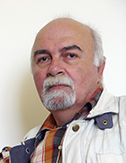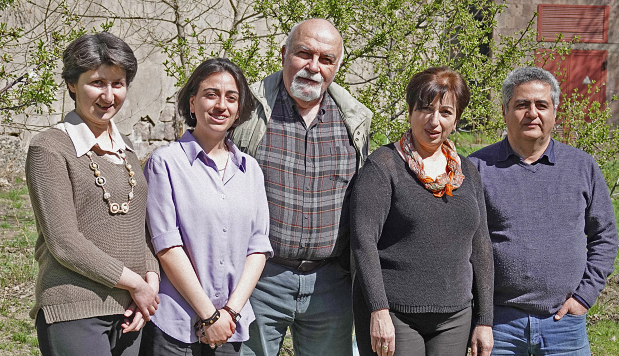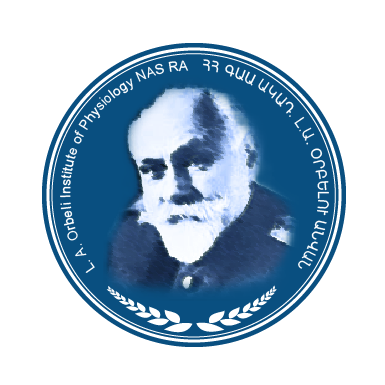- Home
- About us
- Laboratories
- Central Nervous System Physiology
- Central Nervous System functions compensation Physiology
- Immunology and Tissue Engineering
- Smooth Muscle Physiology
- Toxinology and Molecular Systematics
- Sensorimotor Integration
- Laboratory of Histochemistry and Morphology
- Human Psychophysiology
- Integrative Biology
- Purification, Certification and Standardization of Physiologically active substances
- Neuroendocrine Relationships
- Distance Լearning Center
- Laboratory of Hyperspectral Imaging of Surgical Targets
- Biophysics Lab
- News & Events
- Master's Program
- Research
- Councils
- Contact Us
- OIPH Docs
L. A. Orbeli Institute of
Physiology NAS RA
Human Psychophysiology Laboratory

TThe scientific team of the Human psychophysiology laboratory is engaged in a comprehensive study of topical issues of psychophysiology aimed at estimating human functional state. Research areas include the study of the systemic activity of the brain, cognitive processes (memory, attention), as well as the assessment and correction of various emotional states using modern technologies, including virtual reality (VR) technologies.
Another direction of the laboratory is biomedical research in cooperation with «Precision Sensors & Instruments» Ltd. (PSI Ltd.). Various types of ultra-sensitive sensors developed by PSI Ltd. are used in research to assess human functional state and to develop the most affordable methods for diagnosing and monitoring diseases. These sensors can find their application in the field of practical healthcare.
 The laboratory also performs:
The laboratory also performs:
(a) modeling of neuronal systems using mathematical methods:
* model systems with distributed parameters
* optimization methods
* modeling of short- and long-term synaptic plasticity, realistic neuronal networks with dynamic synapses
* modeling of extracellular field potentials generated by large neuronal populations,
(b) bioelectrical signals processing:
* numerical methods
* digital processing of sampled data, including numerical Fourier analysis
* methods for brain signal processing and revealing the interactions between different brain structures based on data from magnetoencephalography,
(c) epilepsy research using EEG analysis and seizure detection algorithms.
A new direction of scientific activity of the laboratory is a medical and biological study of the quality of life of the population of Artsakh after the Artsakh war of 2020, taking into account the relationship with certain psychophysiological parameters: anxiety, well-being, activity, mood, neuroticism, extra- and introversion, temperament. The speed of simple and complex visual-motor reactions, the distribution of attention of the subjects, as well as some cardiohemodynamic and somatometric parameters is also studied. The relationship between quality of life parameters and adaptive capabilities of the organism is considered as a new approach for assessing the risk of disease development.
Special attention is paid to the implementation of new approaches into the study, the development of methods for determining the most informative criteria for a multilateral assessment of the functional state.
Research methods used in the laboratory:
1. Psychological tests (Taylor, Pichot, Eysenck questionnaires) to assess the level of anxiety, depression, hypochondria, asthenia and determine the type of temperament of the subjects
2. Psychophysiological tests, which are used to study the processes of voluntary attention and memory, the temporal characteristics of brain processes of information processing (the speed of simple and complex visual-motor reactions)
3. Polygraphic registration of physiological parameters (EEG, ECG, skin conductance, blood volume pulse, respiration, temperature, analysis of heart rate variability and study of systemic hemodynamics) in order to assess the autonomic support for mental activity and emotional sphere
4. Methods of exposure:
* Exposure to an immersive environment generated by virtual reality (VR) technology
* Exposure to audiovisual stimuli
* Micropolarization of the brain.
Publications
1. Gevorgyan S.G., Khachunts A.S., Gevorgyan G.S., Tumanian A.A., Tadevosyan N.E.
Applicability of the Single-Layer Flat-Coil-Oscillator Technology-Based Vibration and
Vibro-Acoustic Sensors in Medical and Biological Study of the Cardiovascular System:
Advantages and Perspectives of the Carotid Pulse Wave Registration. Review of Scientific
Instruments , Volume 93, Issue 5, 054109, 2022. DOI: 10.1063/5.0076197
2. Tadevosyan N.E., Khachunts A.S., Gohargani M., Sahakyan A.A., Tumanyan A.A.
Voluntary Attention and Quality of Life in Patients With Type 1and Type 2 Diabetes
Mellitus: Differences in Changes Depending on Disease Type and Duration. Journal of
Evolutionary Biochemistry and Physiology, Volume 58, Issue 2, pp. 569–584, 2022. DOI:
10.1134/S0022093022020247
3. Tumanian A.A., Tadevosyan N.E., Khachunts A.S., Tadevosyan I.G., Kostanyan E.G., Haji
Beygi Z.H. Age-Related Changes of Voluntary Attention Process. Russian Journal of
Physiology. Volume 107, Issue 2, pp. 221–231, 2021. DOI: 10.31857/S0869813921020084
4. Gevorgyan S.G., Khachunts A.S., Gevorgyan G.S., Shirinyan H.G., Gevorgyan V.S.,
Kurghinyan B.K., Khachunts S.A. On the Possibility of Recording and Studying Human
Movement Activity with Seismic Sensors of a New Type: Advantages and Prospects of the
Single-Layer Flat-Coil-Oscillator Technology Based Sensors. Review of Scientific
Instruments. Volume 92, Issue 5, p. 055011, 2021. DOI: 10.1063/5.0046024
5. Khachunts, A.S., Gevorgyan, S.G., Gevorgyan, G.S., Khachunts, S.A. Non-Contact Far-
Field Non-Destructive Scanning of Various Structures and Media by Radio-Frequency
‘Magnetic-Field’ SFCO-Probe - a New Type of Visualization Technology. Journal of
Contemporary Physics (Armenian Academy of Sciences). Volume 55, pp. 46–56, 2020.
DOI: 10.3103/S1068337220010077
(Translated from Izvestiya Natsional'noi Akademii Nauk Armenii, Fizika, 2020, Vol. 55,
No. 1, pp. 63–77, https://arar.sci.am/publication/184719).
6. Gohargani M, Tatevosyan N, Mousavizadeh A, Karimpour F. Correlation of Conservative
Coping Strategies in Diabetic Patients and Healthy Individuals. Armaghane Danesh. Volume
25, Issue 2, pp. 344-353, 2020. DOI: 10.52547/armaghanj.25.2.ضمیمه1.344
7. Khachunts, A.S., Gevorgyan, S.G., Tadevosyan, N.E., Tumanyan A.A., Kostanyan E.G.,
Tadevosyan I.G., Kurghinyan B.K., Khachunts S.A., Gevorgyan V.S. Radio-Frequency
‘Magnetic-Field’ Probes Based on the Single Layer Flat Coil Oscillators - New Type of
SFCO-Sensors for Bio-Medical Investigations. Journal of Contemporary Physics
(Armenian Academy of Sciences). Volume 54, pp. 386-393, 2019. DOI:
10.3103/S1068337219040091
(Translated from Izvestiya Natsional'noi Akademii Nauk Armenii, Fizika, 2019, Vol. 54,
No. 4, pp. 526–536, https://arar.sci.am/publication/184758).
8. Tadevosyan N.E., Galstyan A.M., Tumanyan A.A., Forgan B.B. Dynamics of Cognitive
Processes in Middle-Aged Women Treated with a Fraction Derived from
Hydroponic Teucrium Polium Lamiaceae. Neuroscience and Behavioral
Physiology. Volume 49, Issue 4, pp. 484–489, 2019. DOI: 10.1007/s11055-019-00759-3
9. Gohargani M., Tatevosyan N., Mousavizadeh A., Karimpour F. Comparison of Memory
Function in Type 1 Diabetic Patients and Healthy Controls. Armaghane Danesh. Volume 24,
Issue 3, pp. 569-576, 2019. DOI: 10.52547/armaghanj.24.3.ضمیمه1.569
Grants and Competitions
1. Khachunts A., Tadevosyan N., Tumanian A., Khachunts B., Khachatryan E. (team leader
Khachunts A.S., PhD) “Psychophysiological Diagnostic and Treatment Approaches
Based on the Emotional Arousal and Detection in the Virtual Reality Environment”,
Faculty Research Funding Program (Enterprise Incubator Foundation with support of PMI
Science), November 2021.
2. Tumanian A., Khachunts A., Tadevosyan N., Khachunts B., Khachatryan E. (team leader
Tumanian A.A., PhD) “VR as a Tool to Handle Addictions and EQ”, “The Best Tech
Solutions in Non-Tech Industries” Idea Competition (Enterprise Incubator Foundation and
Philip Morris Armenia in partnership with the Ministry of High-Tech Industry of the RA),
November 2021.
3. Gevorgyan G., Kurghinyan B., Tumanian A., Khachunts S. (project director Khachunts A.S.,
PhD) “A Flat Coil and Low Power Tunnel Diode Activated Oscillator System for
Studying the Pulse Waves of Carotid Artery”, ARPA Institute Invention Competition,
October, 2020. Certificate for the first place.
Group members







